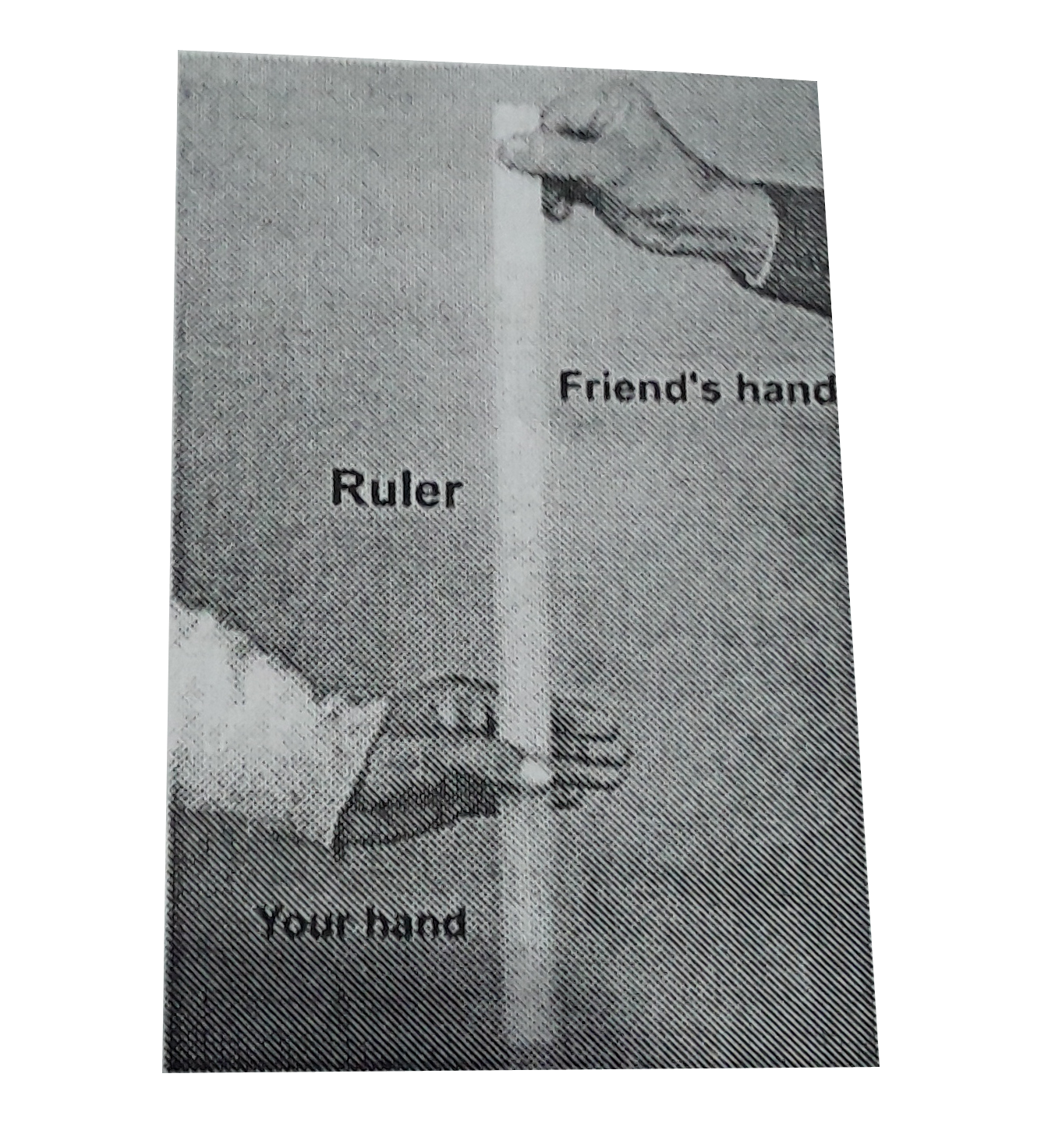When a situation demands our immediate action. It takes some time before we really respond. Reaction time is the time a person takes to observe. Think and act. For example. If a person is driving and suddenly a boy appears on the road, then the time elapsed before he slams the brakes of the car is the reaction time. Reaction time depends on complexity of the situation and on an individual.
You can measure your reaction time by a simple experiment. Take a ruler and ask your friend to drop it vertically through the gap between your thumb and forefinger(Fig. 3.15). After you catch it, find the distance d travelled by the ruler. In a particular case, d was found to be 21.0 cm. Estimate reaction time.

Video Solution
Text Solution
The ruler drops under free fall. Therefore, v0=0 and a=−g−9.8ms−2. The distance travelled d and the reaction time tr are related by
d=−12gt2r
or, tr=√2dgs
Given d=21.0cm and g=9.8ms−2 the reaction time is
tr=√2×0.219.8s≅0.2s
|
Updated on:21/07/2023
Topper's Solved these Questions
Similar Questions
Knowledge Check
- Question 1 - Select One
A person driving a car with a speed 72 km/h suddenly sees a boy crossing the road. If the distance moved by car, before the person applies brakes is 5 m, the reaction time of the person is
A0.5 sB0.10 sC10 sD0.25 s - Question 2 - Select One
The time elapsed between 33% and 67% completionb of a first order reaction is 30 minutes. What is the time needed for 25% completion?
A150.5 minutesB12.5 minutesC180.5 minutesD165.5 minutes - Question 3 - Select One
If a person is driving a car at a speed of 30 m/s, then in how much time person will cover a distance of 1620 km?
A54 hrB15 hrC13 hrD12 hr
Persons living at the same time.
View SolutionLonger the reaction life time, faster is the reaction.
View SolutionAcrosomal reaction occurs at the time of
View SolutionFor the reaction,
A to Products (order =n),
the time of completion of reaction is :View SolutionFor a first order reaction, the time required for 99.9% of the reaction to take place is nearly
View Solution

